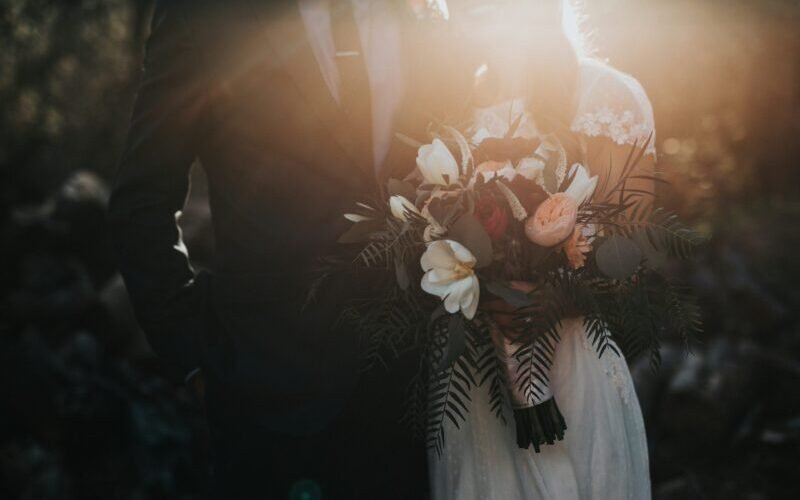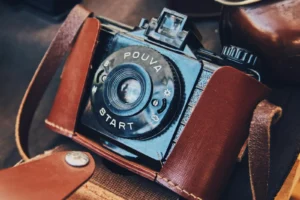Understanding the Wedding Photography Workflow
Wedding photography is a multifaceted process that encompasses several stages, each playing a crucial role in determining the timeline for couples awaiting their wedding photos. The workflow typically begins well before the wedding day, with pre-wedding preparations. This stage often involves consultations between the couple and the photographer to discuss preferences, styles, and the overall vision for the photography. A well-defined plan can significantly streamline the shooting process.
On the day of the wedding, the actual shooting occurs. This phase can last from several hours to a full day, depending on the couple’s schedule and the events planned. Photographers are not only tasked with capturing the ceremony but also the candid moments during the reception, family portraits, and any specific shots requested by the couple. The efficiency of this stage is influenced by the initial discussions held during the preparation phase. A well-organized timeline will allow the photographer to take advantage of natural lighting and key moments, impacting the overall image selection later on.
Once the wedding day concludes, the post-production phase begins, where photographers meticulously edit the images. This is a critical stage involving sorting through hundreds or even thousands of photographs, selecting the best shots, and applying thoughtful edits to enhance the final images. The duration of this post-wedding editing process can vary greatly, often depending on the photographer’s workload and the complexity of the edits required. Additionally, couples should consider the delivery method of their photos—whether through an online gallery, USB drive, or printed albums, as this may also affect the overall timeline.
Ultimately, understanding each step of the wedding photography workflow provides couples with better expectations regarding the timeline for receiving their wedding photos. It is essential to discuss these aspects with the photographer to establish a clear line of communication.
Factors That Influence Photo Delivery Time
Receiving wedding photos in a timely manner is often a significant concern for couples after their special day. Several interrelated factors can impact the delivery timeline for these cherished memories. Understanding these factors can help set realistic expectations and reduce any potential anxiety associated with waiting for the final images.
One crucial aspect is the photographer’s editing style. Different photographers have distinctive methods and timelines for editing. Some may adopt a more photojournalistic approach, focusing on capturing candid moments, which could reduce editing time. Others may prefer a more artistic approach, involving extensive post-processing that enhances the photos creatively. This artistry often entails a longer waiting period, as the photographer meticulously refines each image to match their vision.
The volume of footage captured during the wedding also plays a significant role in delivery times. A wedding with numerous events and moments documented will naturally result in a higher number of images to edit. Photographers usually work on a first-come, first-served basis; therefore, larger collections can extend the processing period. Additionally, the backlog of work can affect when couples receive their photos. During peak wedding seasons, photographers often juggle multiple projects simultaneously, leading to potential delays in delivering images from any single event.
Finally, the time of year when weddings take place can influence the delivery speed as well. Weddings in spring and summer may coincide with a busy season for many photographers, potentially resulting in longer wait times. Conversely, off-season weddings in winter might allow photographers to process images more quickly due to reduced workloads. By considering these factors, couples can better understand the variables at play in photo delivery and make informed decisions when selecting their wedding photographer.
Average Turnaround Times for Wedding Photos
Understanding the average turnaround times for receiving wedding photos is essential for couples planning their big day. Generally, the timeframe for delivery can vary widely based on a multitude of factors, including the photographer’s workload, the style of photography chosen, and the complexity of the post-processing involved. On average, couples can expect to receive their wedding photos anywhere from four to twelve weeks after the event.
For traditional photographers, the typical range is around six to eight weeks. This timeframe allows the photographer to sort through hundreds, if not thousands, of images, selecting the best shots, enhancing them, and preparing them for final delivery. On the other hand, some photographers who specialize in documentary or lifestyle photography often provide a quicker turnaround, sometimes delivering a selection of edited images within two to four weeks. This speedy service is particularly appealing to couples eager to share their wedding joy on social media.
It is essential to note that photographers may also offer different packages which could influence delivery times. For instance, packages that include same-day edits may provide couples with a few high-resolution images shortly after the ceremony, whereas full galleries will still follow the standard timeline. Couples should be aware that photographers who focus on artistic styles, such as fine art photography, may require more time for meticulous edits, potentially leading to a delivery window extending closer to twelve weeks.
Ultimately, communication with your chosen photographer is crucial in aligning expectations regarding the estimated delivery of wedding photos. Discussing turnaround times during the consultation phase can help ensure that couples have a clear understanding of when they can expect to relive their wedding day memories through beautifully captured images.
Importance of Communication with Your Photographer
Effective communication with your wedding photographer is crucial to ensuring that your expectations regarding timelines and deliverables are met. From the moment you select a photographer, establishing a clear line of communication can significantly enhance the overall experience. By discussing your desired outcomes, including how quickly you anticipate receiving your wedding photos, you create a foundation for collaboration that benefits both parties.
It’s essential to have open conversations about your specific needs and preferences. This includes discussing your preferred styles of photography, any must-have shots, and the timeline for receiving proofs and final images. Photographers often have different processing times, influenced by factors such as the size of the wedding, the editing required, and their workload. By understanding these variables through open dialogue, couples can manage their expectations more effectively.
Additionally, sharing your wedding day timeline with your photographer can help them plan their shooting schedule more efficiently. It allows them to allocate time for capturing all important moments while ensuring that important details are not overlooked. Asking your photographer about their typical post-wedding timeline can provide insight into when you can expect the final photos, helping you avoid unnecessary anxiety.
Moreover, establishing a rapport with your photographer encourages them to invest more in your special day. When photographers feel connected to the couple, they are often more motivated to bring their best work forward. To facilitate smooth communication, consider scheduling a pre-wedding consultation. This meeting can clarify any remaining uncertainties, ensuring that both parties are aligned on the day’s expectations.
In essence, maintaining open channels of communication with your wedding photographer not only promotes transparency but also fosters a more pleasant experience, enhancing the likelihood of receiving stunning images in a timely manner.
What to Expect During the Waiting Period
As couples eagerly await their wedding photos, it is common for them to feel a mix of excitement and anxiety. Understanding the behind-the-scenes process can help alleviate some of that apprehension. Photographers usually have a structured workflow when it comes to editing and delivering images, helping them manage their time efficiently while ensuring a high-quality product.
After the wedding day, the first step photographers take is to offload and back up the images from cameras and memory cards. This is a crucial part of the process, as it ensures that the images are safeguarded against potential loss. Following this, photographers will typically begin the process of culling the images. This involves sorting through hundreds, if not thousands, of photos to select the best shots that tell the couple’s unique story. The culling stage can be time-consuming but is essential for delivering a curated gallery.
Once the best images have been selected, the editing process begins. Each photo is enhanced for color, exposure, and other elements to create a polished final product. The amount of time required for editing varies significantly depending on factors such as the photographer’s style, the number of images, and any specific retouching requests made by the couple. It is essential to bear in mind that attention to detail is a key aspect of this phase, as photographers strive to present their work at the highest quality possible.
Many photographers provide couples with a time frame for when they can expect to see their images, typically ranging from a few weeks to several months. This waiting period can be an excellent time for couples to reminisce about their wedding day, making the eventual delivery of photos even more rewarding. Photographers understand the importance of these images and work diligently to ensure they are in good hands throughout the entire process.
How to Handle Delays in Photo Delivery
Experiencing delays in receiving your wedding photos can be understandably frustrating. The excitement of reliving those cherished moments through photographs may bring about feelings of impatience when your photographer has not delivered the images within the anticipated timeframe. It is essential to remain calm and approach the situation with a proactive mindset.
The first step in addressing delays in photo delivery is to establish clear communication with your photographer. Begin by reaching out via email or phone to inquire about the status of your photos. In your correspondence, express your eagerness to see the images while remaining courteous and understanding of their workload. Many photographers take on multiple projects, and unexpected circumstances may arise that impact the timeline. Therefore, approaching your photographer with empathy can lead to a productive conversation.
If your attempts to contact your photographer yield no response after a reasonable waiting period, consider following up again. A gentle reminder can sometimes prompt a quicker reply. Clarifying your expectations about when you’d like to receive the wedding photos can also be helpful. Photographers typically provide an estimated timeline for delivery, which can vary based on their backlog or editing requests.
In cases where delays extend further than anticipated, it may be worth reviewing your contract terms regarding photo delivery and any stipulations on unmet deadlines. Familiarizing yourself with these details can provide you with necessary context when discussing the situation with your photographer.
Overall, fostering open communication is the most effective strategy for handling delays in wedding photo delivery. By addressing the matter diplomatically and staying informed, you can alleviate some of the stress associated with waiting and ultimately ensure you receive your precious memories in due time.
The Role of Editing in the Delivery Timeline
Editing is a crucial component of the wedding photography process that significantly impacts the delivery timeline of your wedding photos. After the wedding, photographers typically have a large volume of images to sift through, select, and enhance before presenting them to the couple. This meticulous editing process ensures that the final products are not only visually appealing but also reflective of the special moments captured during the day.
There are various levels of editing that photographers may employ, including light, medium, and heavy editing. Light editing often involves basic adjustments such as color correction, exposure adjustments, and cropping. This form of editing is quicker and usually takes less time to complete, allowing for a faster turnaround. Medium editing includes more detailed adjustments such as retouching skin imperfections, enhancing specific colors, and applying artistic styles to certain images. This level of editing requires additional time, as the photographer invests more care into individual images.
Heavy editing is the most intricate and time-consuming form of post-processing. This might encompass extensive retouching, creative manipulation, or compositing different elements from multiple photographs into one final image. Photographers might use advanced software tools in heavy editing to achieve a specific aesthetic or to correct features that may detract from the beauty of the photographs. Couples should be aware that while heavy editing results in stunning images, it also adds considerable time to the overall delivery timeline.
In essence, the decision regarding the level of editing can vary significantly between different photographers. Therefore, it is advisable for couples to discuss their expectations for photo delivery and editing styles with their chosen photographer ahead of the wedding. This forethought will not only clarify the anticipated timeline but also ensure that the final gallery exceeds their expectations.
Tips for Getting Your Photos Sooner
One of the foremost concerns for couples post-wedding is the timely delivery of their wedding photos. After the whirlwind of the event, anticipation can grow as you await those moments captured on camera. To expedite the photo delivery process, consider the following practical tips.
Firstly, selecting a photographer known for their prompt turnaround times can significantly influence how quickly you receive your wedding album. When searching for a photographer, take the time to review their portfolio and testimonials. Look for feedback specifically mentioning their efficiency in delivering edited images. Photographers often have different editing styles, and some may prioritize speed while maintaining quality.
Additionally, scheduling a consultation to discuss your timeline can be beneficial. During this meeting, express your desire for a quicker delivery. Many photographers are willing to accommodate specific needs, and they may offer various packages that include expedited editing options as part of their services.
Another effective strategy is to consider the time of year you are getting married. Wedding seasons can become quite busy, leading to longer wait times due to a photographer’s backlog. Opting for an off-peak season can result in faster editing and delivery, as photographers often have more availability and can dedicate more focused attention to your photos.
Lastly, be sure to communicate any specific preferences or essential shots you would like prioritized in the editing process. By being clear about your top choices, photographers can swiftly process those images, getting them to you sooner without affecting the quality of the remaining photos.
By following these practical tips, couples can improve their chances of receiving their cherished wedding photos in a more timely manner, allowing them to relive the joyous occasion sooner.
Conclusion: Setting Realistic Expectations
Receiving wedding photos is an integral part of the overall wedding experience, and it is essential to set realistic expectations regarding the timeline involved in this process. The excitement surrounding the wedding day can lead couples to anticipate immediate results; however, understanding the nuances of professional photography is crucial. A standard timeframe for receiving wedding photos can range from a few weeks to several months, depending on various factors such as the photographer’s schedule, the number of images captured, and the intricacies involved in the editing process.
Couples should recognize that professional photographers invest considerable time and effort into editing and curating the final images. The aim is to provide high-quality, artistic representations of the wedding day, capturing the myriad emotions and moments that unfolded. This detailed editing can often mean a longer waiting period, but it is this patience that ultimately enriches the final product, making the photos a treasured keepsake for the couple.
Moreover, communication with the photographer can help set clearer expectations. Prior discussions regarding timelines, delivery methods, and image selection can ease anxieties about when couples will receive their wedding photos. It’s advisable to ask for clarification on any average turnaround times, as some studios may have different policies or peak seasons that could affect delivery.
Ultimately, while the anticipation of wedding photographs is a significant aspect of post-wedding bliss, it is essential for couples to appreciate the artistry behind professional photography. By setting realistic expectations and understanding the creative process at play, couples can look forward to receiving their cherished memories in due time, transforming their wedding experience into a lasting visual legacy.






